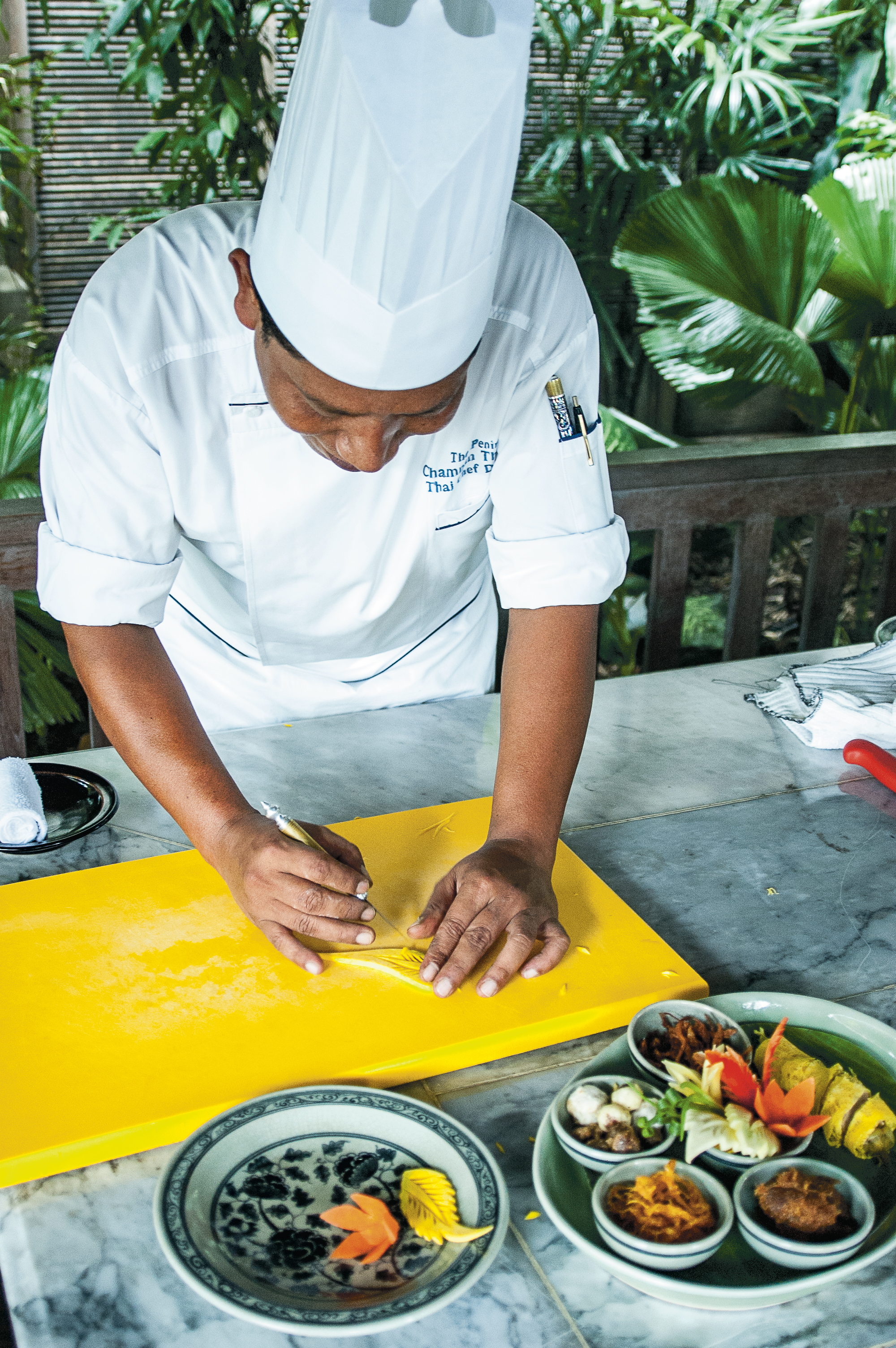Aromatic Khao Chae and Best Places to Get Them
Beat the heat with the aromatic khao chae, a delicate dish designed to soothe the soul.
Khao chae, with its mix of sweet and deep-fried treats, and its jasmine-scented ice-cold water, is both serious comfort food and efficent protection from the heat. “It actually has a genuine cooling effect on the body. Chinese food is oily, which provides insulation from the cold. But in this case, the sweetness combined with the cool water and aroma work together to lower your internal temperature,” says celebrity TV chef Yingsak Jonglertjesdawong.
 While many argue that this side dish is the most traditional in Thailand, it is actually quite hard to pinpoint its specific origins. According to Ampornsri Pornpithakdumrong, an expert in Thai royal recipes, “After King Rama V brought khao chae back from the Mon people, his family and other aristocrats adopted it and it spread around the country. Different palaces like Wang Bang Khun Prom and Wang Suan Sunandha developed different recipes, and the dish evolved.”
While many argue that this side dish is the most traditional in Thailand, it is actually quite hard to pinpoint its specific origins. According to Ampornsri Pornpithakdumrong, an expert in Thai royal recipes, “After King Rama V brought khao chae back from the Mon people, his family and other aristocrats adopted it and it spread around the country. Different palaces like Wang Bang Khun Prom and Wang Suan Sunandha developed different recipes, and the dish evolved.”
Today, the three most famous variants are the royal recipe, the Phetburi one and the original Mon recipe. Despite variations you can normally expect the following in your khao chae: luk kapi (dried fish and shrimp paste balls), hom daeng yud sai (stuffed shallots), prik yuak sord sai (stuffed sweet peppers), shredded sweet pork, carved vegetables, pla wan (sweetened fish) and chai poe phad kai (stir-fried preserved turnip with eggs).
But like lots of Thai dishes, today’s khao chae is often made by taking shortcuts and lacks the necessary attention to detail, especially with the rice. Yingsak says, “People just throw the rice in the jasmine-scented water and it becomes very soggy.” In fact, the proper process takes three days. “First, you soak the rice with jasmine flowers overnight, then with ylang ylang flowers. Then you smoke it with ob candles,” says Ampornsri.
Today’s khao chae might not be made strictly to tradition, but its very surival is a testament to its greatness. “It’s wonderful that people are still thinking of it,” says Yingsak. “Restaurants are still serving khao chae to new generations. It’s admirable that they don’t just go for something new and trendy. We really have to save this tradition. If you eat a beautifully carved fingerroot with khao chae, you don’t want microwaved convenience store food anymore.”
Bussaracum (B250)
Their khao chae arrives with elaborately presented carved vegetables.
1 Soi Pramual, Si Wiang Rd., Silom, 02-630-2216-8. Open daily 11am-2pm, 5:30-10:30pm
Than Ying (B295, lunch only)
A recipe created by M.C. Sulapwanleng Wisuthi during the reign of Rama VII’s reign. Reservations recommended.
10 Soi Pramuan, Silom Rd., 02-236-4361. Open daily 11:30am-10pm
Khao Chae Raan Pa Tib (B170)
This sweet grandma sells khao chae out of her home. Her recipe is also M.C. Sulapwanleng Wisuthi’s, and she says she used to work in her kitchen.
Call (one day in advance) and pick up at Coutier Club Bld. (next to Sukhothai Palace), Samsen Rd., 02-241-3188. Open daily 9am-6pm
Khao chae mae tong yod (B35)
A Mon recipe passed down for 200 years.
Koh Kred, in front of Wat Poramaiyikawas School, 084-543-5411. Open Sat-Sun and holidays 10am-5pm
Patara Fine Thai Cuisine (B450, lunch only)
Their own recipe.
375 Thonglor Soi 19, 02-185-2960-1. Open daily 11:30am-2:30pm, 6-11pm
Thiptara (B420)
The recipe was passed down to Chef Chamnan Thepchana from the aristocratic, Malakul family. Some of the ingredients like jasmine flowers are grown in the chef’s own garden.
G/F, The Peninsula Hotel, 333 Charoennakorn Rd., 02-861-8888. Open daily 6am-10:30pm
Advertisement